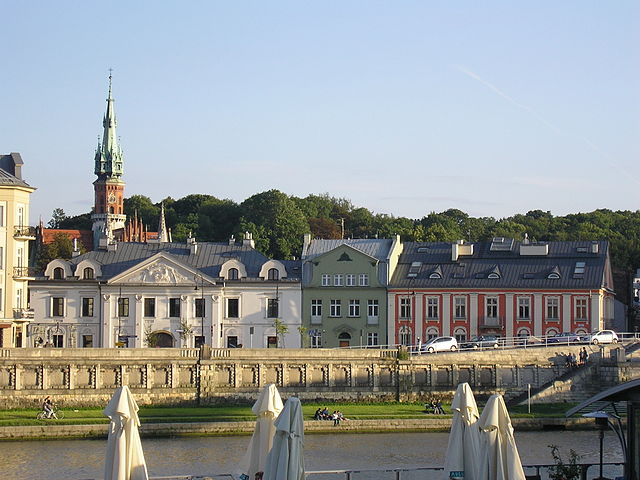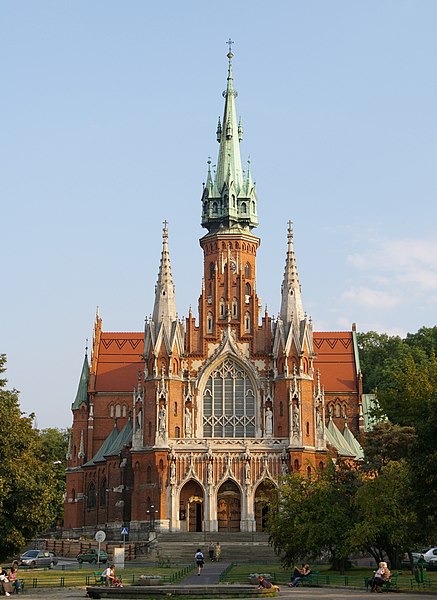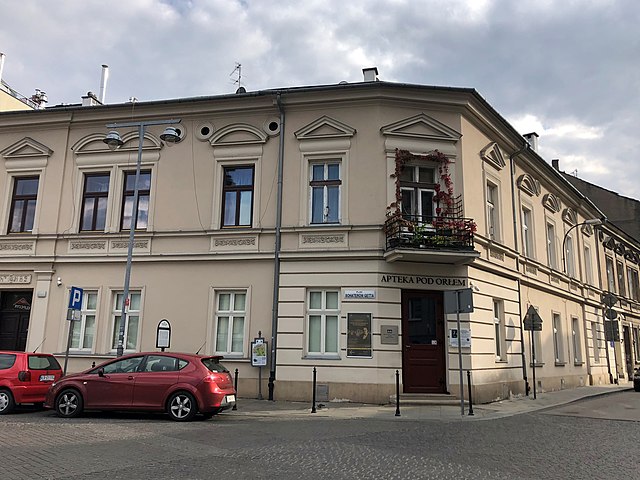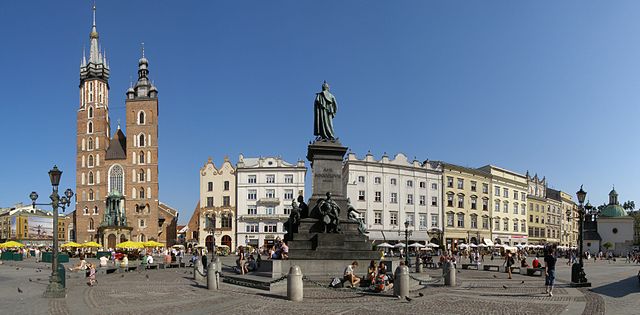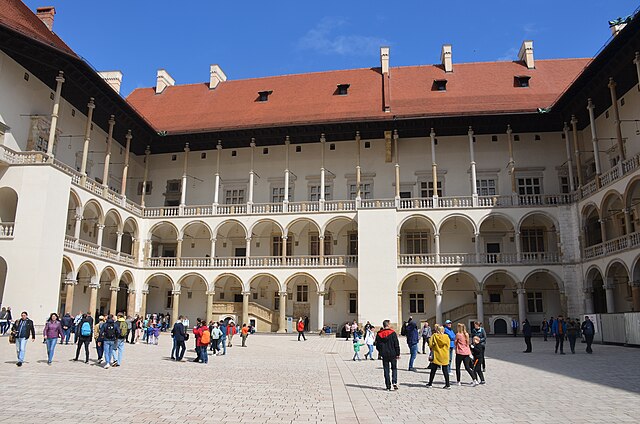Podgórze is a district of Kraków, Poland, situated on the right (southern) bank of the Vistula River, at the foot of Lasota Hill. The district was subdivided in 1990 into six new districts, see present-day districts of Kraków for more details. The name Podgórze roughly translates as the base of a hill. Initially a small settlement, in the years following the First Partition of Poland the town's development was promoted by the Austria-Hungary Emperor Joseph II who in 1784 granted it the city status, as the Royal Free City of Podgórze. In the following years it was a self-governing administrative unit. After the Third Partition of Poland in 1795 and the takeover of the entire city by the Empire, Podgórze lost its political role of an independent suburb across the river from the Old Town.
View of Podgórze and Józefińska Street from the river Vistula
St. Joseph's Church, built 1905–1909
Tadeusz Pankiewicz's "Eagle pharmacy" pharmacy at the heart of Kraków Ghetto in World War II
Kraków, also seen spelled Cracow or absent Polish diacritics as Krakow, is the second-largest and one of the oldest cities in Poland. Situated on the Vistula River in Lesser Poland Voivodeship, the city dates back to the seventh century. Kraków was the official capital of Poland until 1596, and has traditionally been one of the leading centres of Polish academic, economic, cultural and artistic life. Cited as one of Europe's most beautiful cities, its Old Town with Wawel Royal Castle was declared a UNESCO World Heritage Site in 1978, one of the world's first sites granted the status.
Image: Krakow Rynek Glowny panorama 2
Image: XII, XIV, XIX, Kraków
Image: Kościół p.w. św. Piotra i Pawła, Kraków
Image: 02023 0692 Wawel Castle

